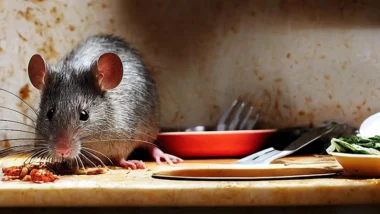Podcast: Play in new window | Download
Summer nights, backyard barbecues, and relaxing evenings on the patio – these are the joys of the warmer months. But sometimes, these idyllic moments are shattered by the relentless, almost invisible bite of the dreaded no-see-um. These tiny pests can turn a pleasant evening into an itchy nightmare. So, what exactly are no-see-ums, and more importantly, how can you deal with them?
No-see-ums, also known as biting midges, are tiny flying insects, typically only about 1-3 millimeters long. Their size is what makes them so difficult to spot, hence the name. They’re often mistaken for mosquitoes, but no-see-ums are much smaller and their bites can be disproportionately painful and itchy. Only the females bite, requiring blood to develop their eggs. They’re attracted to carbon dioxide, body heat, and light, which is why they often become a nuisance around homes and outdoor gatherings.
These tiny terrors are most active at dawn and dusk, coinciding with those beautiful times of day we often want to enjoy outdoors. They thrive in humid environments and are commonly found near bodies of water, such as marshes, swamps, and even damp areas in your yard. Their breeding grounds can include decaying vegetation, mud, and even the moist soil around potted plants.
So, how do you know if you’ve been bitten by a no-see-um? The bites are typically small, red welts that appear shortly after the bite. The intense itching can last for days, sometimes even leading to secondary infections from excessive scratching. Unlike mosquito bites, no-see-um bites often feel more like a burning or stinging sensation.
Now for the crucial part: how do you deal with these microscopic menaces? Prevention is key. Here are some effective strategies to minimize no-see-um encounters:
Eliminate Breeding Grounds: Reduce standing water around your property. Empty containers, bird baths, and clogged gutters. Trim overgrown vegetation and keep your lawn well-maintained to improve drainage. If you have a pond or other water feature, consider adding mosquito-eating fish or using appropriate larvicides.
Use Insect Repellent: DEET-based repellents are effective against no-see-ums, but look for products specifically labeled for these pests. Picaridin and IR3535 are also good alternatives. Apply repellent liberally to exposed skin, following the product instructions. Consider using natural repellents like citronella or eucalyptus oil, though their effectiveness may vary.
Dress Appropriately: Wear light-colored, long-sleeved clothing when you’re going to be outdoors, especially during peak no-see-um activity times. Tucking your pants into your socks can also help prevent bites.
Avoid Peak Times and Locations: Limit your outdoor activities during dawn and dusk, and try to avoid areas known to have high no-see-um populations, such as near stagnant water.
Install Screens: Ensure that all your windows and doors have screens in good condition to prevent no-see-ums from entering your home. Use fine mesh screens, as these tiny insects can easily pass through standard screens.
Use Fans: No-see-ums are weak fliers. Setting up fans on your patio or deck can create a breeze that makes it difficult for them to reach you.
Consider Professional Help: If you’re struggling to control no-see-ums on your property, consider contacting a pest control professional. They can identify breeding sites and recommend appropriate treatment options.
Dealing with no-see-ums can be frustrating, but by understanding their habits and taking proactive steps, you can significantly reduce their impact and reclaim your outdoor spaces. Don’t let these tiny pests ruin your summer fun. With a little vigilance and the right approach, you can keep those itchy bites at bay.
